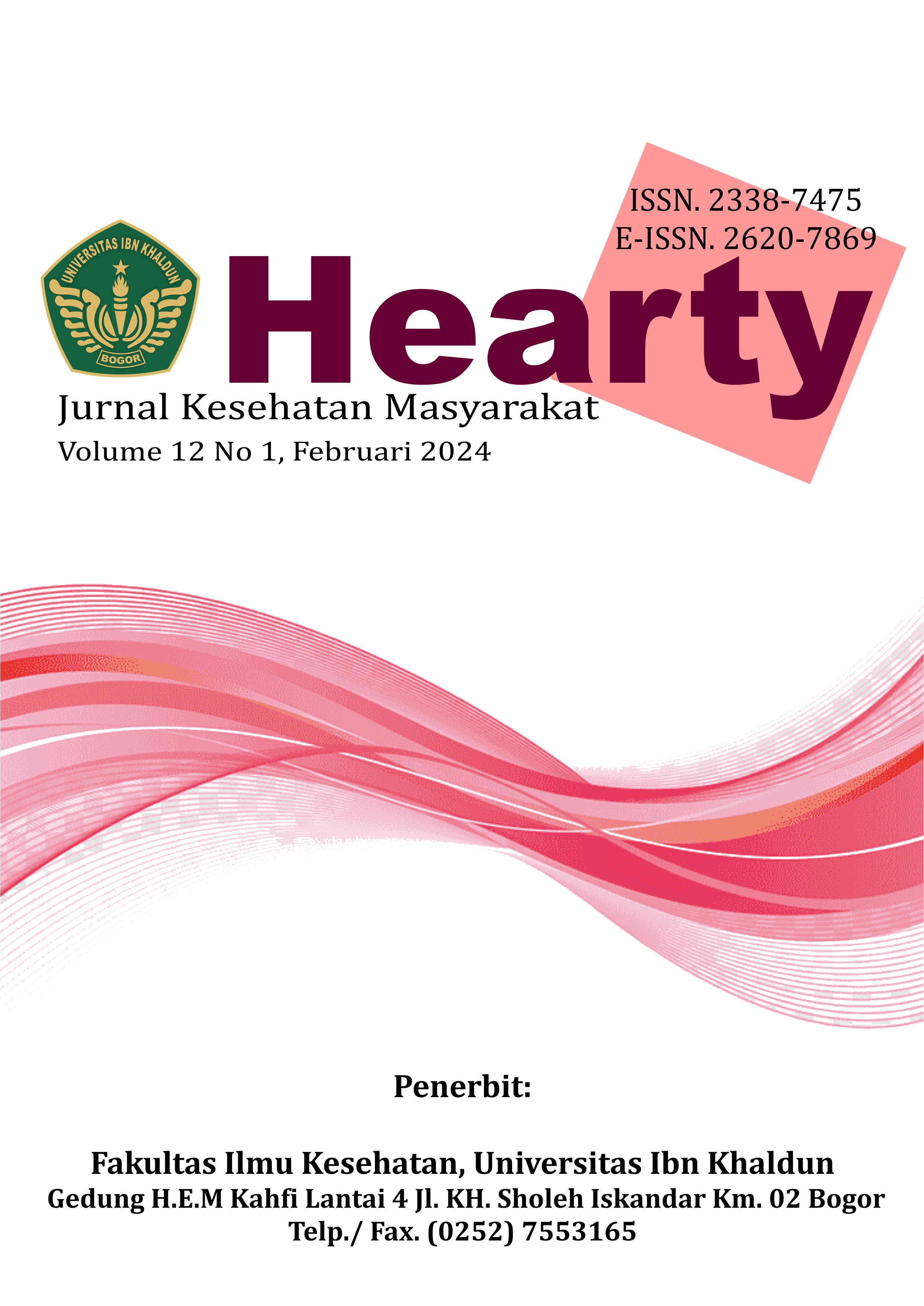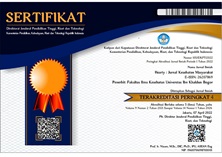RELATIONSHIP BETWEEN THE FREQUENCY OF DRAINING WATER RESERVOIRS AND THE INCIDENCE OF DENGUE FEVER (DHF) IN THE WORKING AREA OF TEMINDUNG HEALTH CENTER, SAMARINDA CITY
DOI:
https://doi.org/10.32832/hearty.v12i1.15182Abstrak
This study evaluated the relationship between the frequency of draining water reservoirs and the incidence of Dengue Fever (DHF) in the Temindung Health Center Working Area, Samarinda City. By adopting a quantitative approach and cross-sectional research design, 67 samples were selected using stratified random sampling technique. Data were collected through observation, interviews, and questionnaires, and analyzed using the Chi-square test and Fisher's Exact Test. The results showed that the group that drained water reservoirs more than or equal to once a week had a lower number of DHF cases compared to the group that drained less than once a week. The result using the 0.1 confidence level was 0.060 (p<0.1), so the analysis showed an indication of an association between the frequency of draining water reservoirs and the risk of DHF. In conclusion, the practice of regularly draining water reservoirs can potentially be an effective strategy in dengue prevention, and active community participation in this activity plays a crucial role in achieving the goal of dengue prevention and control in the area.
























